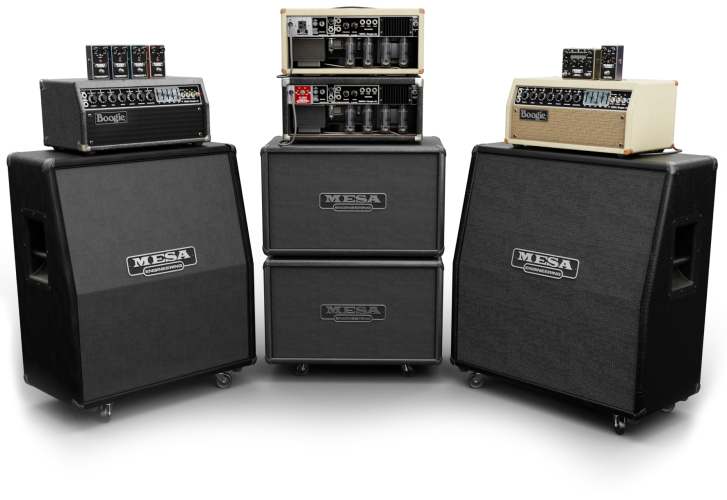This article will unravel the history and evolution of the Mesa Boogie Mark II amplifier, detailing its revolutionary features, modifications, and its impact on guitar music throughout the decades
The Mesa Boogie Mark II was introduced in 1978. It was the first ever guitar amplifier to feature channel switching, or more specifically, Mode Switching, as denoted by its patent application.
The Mark IIB was released in 1980, and it was the first guitar amplifier with a buffered effects loop. It was later offered in Simul-Class versions, whereby two power tubes operated in Class AB while the other two operated in Class A. At this point, the Mark II became known as the Mark IIA internally.
The Mark IIB used relays to facilitate switching channels, which made a loud “pop” when the channels/modes were swapped while guitar signal was present. So, despite the useful effects loop and great tone, it was retired for the next model in late 1983 in an effort to reduce this switching noise and improve the effects loop.
The Mark IIC was introduced in 1983, which remedied the Mark IIB’s noisy switching. However, further development revealed that its updated effects loop placement didn’t prove as optimal as initially thought. It was updated with an improved effects loop that also benefited the sound and dynamic sense. This update was signified internally by a “+” sign added in magic marker on the rear of the chassis above the power cord, thus creating the Mark IIC+.
The Mark IIC+ featured several updates to the initial IIC design, including an EQ Auto function on the EQ toggle that automatically triggered the Graphic EQ in the Lead Mode. An “Auto” option for the existing “Treble Shift” feature was also added to the Treble control’s “Pull Shift” that did the same. Additional revoicing of the preamp was included. The result was a more aggressive, more dynamic voice that was focused in the midrange, authoritative yet vocal in the top end, and super tight in the low end. This revoicing made it supremely well-suited to soaring lead sounds and huge crunch chords (with the EQ engaged), and it was catapulted to the forefront of pop and heavy music styles, with rock’s biggest artists increasingly using Mark IIC+ models for their recording and touring.
Mesa Boogie customers who had initially bought IICs were invited to send their IIC amplifiers back to the factory to have the IIC+ modifications performed, which Mesa Boogie didn’t charge for until demand for the modifications started to affect the production of new amplifiers. Well into the future and long after IIC+s earned their legendary status, Chief Mesa tech and Mesa Boogie’s longest-standing employee, Michael Bendinelli, continued to make the modifications for those who found and bought IIC models on the preowned market, though understandably, there was a charge for this service.
The Mark IIC+ proved to be a huge success and in hindsight, one of the most important guitar tone milestones of the 80s; a significant era for guitar and its radio popularity. Yet, despite its impact, the IIC+ remained in production for only a little more than a year, and a total of just under 3000 units were built before the amp was replaced by the feature-updated, 3-mode Mark III in 1985. However, its impact on the world of guitar and especially heavy music remains relevant, and it continues to be the most coveted vintage Mesa Boogie amp. So much so that subsequent Mark amplifiers such as the Mark V and JP 2C have included the infamous IIC+ circuit as the staple high gain lead channel.
An additional mod was made for Vivian Campbell of Dio and Kirk Hammett and James Hetfield of Metallica, as well as a few other well-known guitarists of the day. This modification, dubbed the “++ Mod”, increased the gain a little in the Lead Channel but was never put into production, with approximately 20 performed by Mesa Boogie before IIC+ production ended. Nowadays, finding a IIC+ owner who will part with their legendary amplifier is near impossible, and IIC++s are practically mythical.
We spent a lot of time accurately replicating every nuance of both amplifiers, immortalizing it in digital form so that you, too, can own a piece of history.
A special thank you to Doug West and Michael Bendinelli at Mesa Boogie for providing us the history of these amplifiers and to the owners of the IIC+ and IIC++ that we used to make this plugin.

Download a free trial of the Mesa Boogie Mark II Suite
All our plugins come with a 14-day free trial.